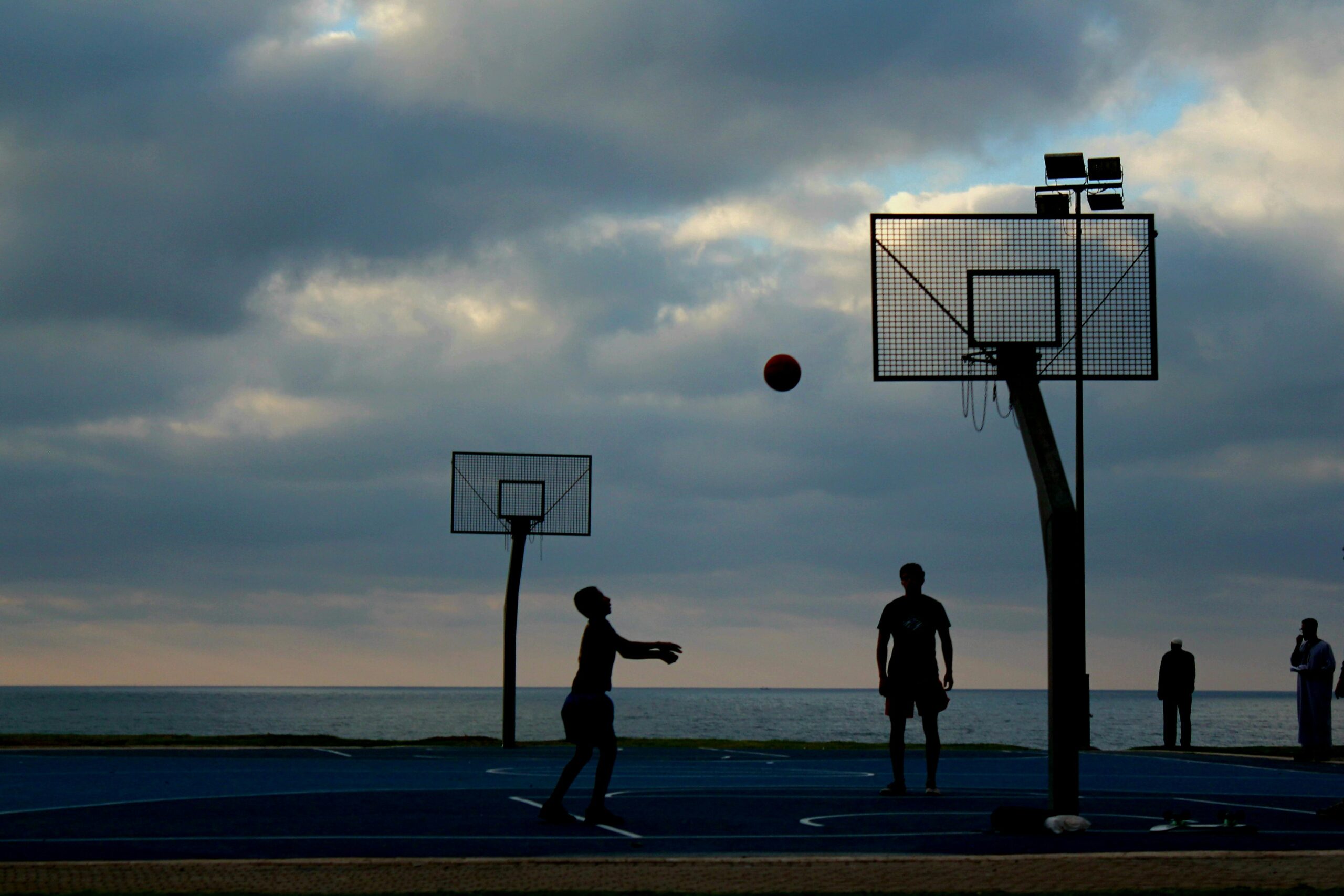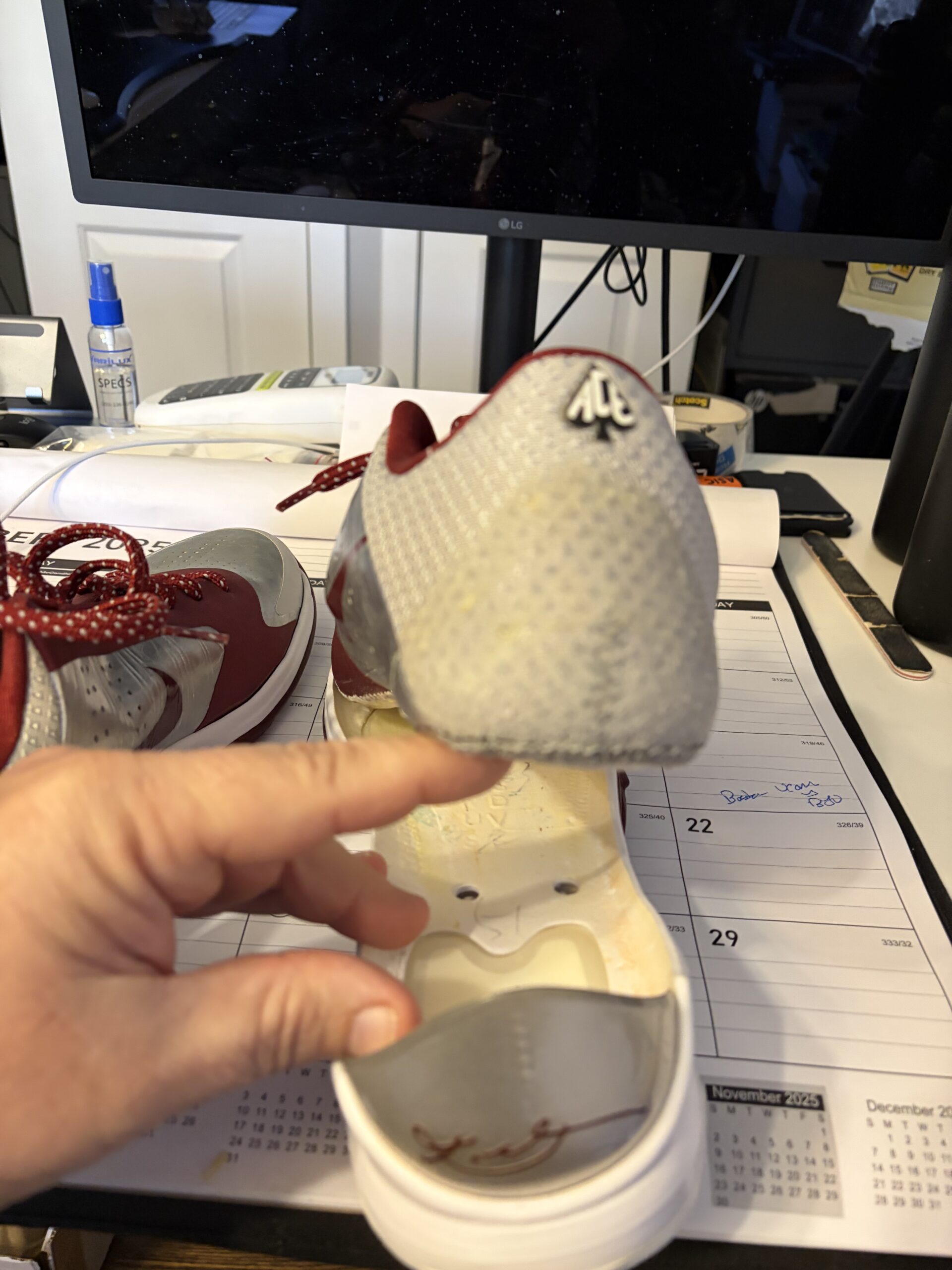Listen up, hooper. You say you want to get better? You say you’re serious about your game? Then stop making excuses and start showing up to the court ready to work. Not every session needs five-on-five to make you better. Some of the most effective training happens with just you and a few other players who are hungry like you are.
Here’s your playbook for getting real work in, no matter who shows up.
1-on-1: The Ultimate Truth Teller
The Game: First to 11, win by 2. Make it, take it or alternating possessions—your call.
Why It Works: One-on-one strips basketball down to its purest form. No screens to hide behind. No teammates to bail you out. Just you, your defender, and the truth about your game.
What You’re Really Working On:
- Creating your own shot under constant pressure
- Finishing through contact when help isn’t coming
- Reading your defender’s tendencies and adjusting in real time
- Mental toughness when you’re getting cooked
- Footwork fundamentals that translate to every basketball situation
Make It Count: Don’t just play—compete with purpose. Work on your weak hand. Practice your step-back. Force yourself to finish with your off-hand around the rim. If you’re always going right, your opponent will figure it out by game three. Mix up your game and force yourself to be uncomfortable.
2-on-2: The Chess Match
The Game: First to 15, win by 2. Half court, call your own fouls.
Why It Works: Two-on-two is basketball chess. With only four players on the court, every decision matters. You can’t hide weak players or rely on chaos. You have to execute, communicate, and think two moves ahead.
What You’re Really Working On:
- Pick-and-roll execution in space
- Off-ball movement and cutting
- Help defense and rotations
- Chemistry building with your teammate
- Court spacing and decision making
Make It Count: Switch up your partner every few games. Learn to play with different styles—the shooter, the driver, the post player. Practice calling plays and running actual sets. This isn’t streetball time; this is about becoming a smarter basketball player.
3-on-3: Half Court Perfection
The Game: First to 21, win by 2. Clear the ball past the three-point line on defensive rebounds.
Why It Works: Three-on-three is where basketball IQ gets developed. With more players but limited space, you have to be precise with your movements, passes, and decisions. It’s organized enough to run sets but open enough to improvise.
What You’re Really Working On:
- Team basketball concepts in a simplified format
- Defensive rotations and help defense
- Multiple screening actions and combinations
- Post-up opportunities with room to work
- Transition offense and quick decision making
Make It Count: Run actual plays. Practice your team’s offensive sets in a 3-on-3 format. Work on defensive communication—call out screens, switches, and help. Make every possession matter like it’s a game-winner.
21: The Grind That Builds Killers
The Game: Shoot free throws to start. Make it, you get the ball and score however you can. Miss it, everyone else can rebound and score. First to 21, exactly 21. Go over and you drop back to 15.
Why It Works: Twenty-one rewards pure scorers and punishes mental mistakes. You have to be clutch under pressure, fight for every rebound, and stay composed when things get chaotic.
What You’re Really Working On:
- Free throw shooting under pressure
- Rebounding in traffic against multiple players
- Finishing strong through contact
- Mental toughness when you’re at 20 and everyone’s trying to knock you back
- Clutch gene development when the game’s on the line
Make It Count: Practice your free throw routine like your life depends on it. Work on finishing with both hands around the rim. When you’re at 19 or 20, don’t play it safe—that’s when you need to be most aggressive. This game teaches you to stay composed when everyone wants to see you fail.
Horse: Skills Development Disguised as Fun
The Game: Take turns attempting shots. Miss what your opponent makes, and you get a letter. Spell H-O-R-S-E and you’re out.
Why It Works: Horse forces you to attempt shots you’d never try in a game, expanding your range and creativity. It’s skills development that doesn’t feel like work, but every shot is building your basketball toolbox.
What You’re Really Working On:
- Shot creation from anywhere on the court
- Range extension beyond your comfort zone
- Creativity and imagination with the basketball
- Pressure shooting when you have to make it or get a letter
- Confidence building with difficult shots
Make It Count: Don’t just jack up crazy shots for entertainment. Work on game shots from different spots. Practice your step-backs, turnarounds, and difficult finishes. Use Horse to expand what you consider a “good shot” for your game.
King of the Court: Competitive Edge Building
The Game: Winner stays, challengers rotate in. Play to a set number (usually 7-11). King defends their throne.
Why It Works: This format rewards consistency and punishes mental lapses. You can’t have off games when fresh legs keep coming at you. It builds the competitive stamina that separates good players from great ones.
What You’re Really Working On:
- Sustained excellence over multiple games
- Adapting to different opponents quickly
- Maintaining focus when you’re tired
- Competitive fire that refuses to give up the court
- Confidence building through winning streaks
Make It Count: Study your opponents between games. What worked against the last guy might not work against the next challenger. Stay aggressive even when you’re tired. This is where champions are separated from everyone else.
The Real Work Happens When Nobody’s Watching
Here’s the truth, hooper: these games aren’t just fun ways to pass time. They’re laboratories for developing the skills that will make you unstoppable when it matters most. Every rep in these formats is building something specific in your game.
But here’s the catch: You have to approach them with purpose. Don’t just show up and go through the motions. Set goals for each session. Work on your weaknesses. Push yourself out of your comfort zone.
When you’re playing 1-on-1, don’t just do what feels comfortable. If you always drive right, force yourself to go left. If you struggle finishing with your weak hand, attack the rim that way every time.
When you’re in 2-on-2 or 3-on-3, don’t just freelance. Run actual plays. Practice the sets your team uses. Work on your communication and leadership.
When you’re grinding through 21, don’t just try to survive. Use it as free throw practice under pressure. Work on your rebounding technique. Practice finishing strong through contact.
The Bottom Line
Every great player in basketball history put in countless hours in formats just like these. Jordan dominated 1-on-1 games in Chicago. Kobe perfected his footwork through endless 2-on-2 battles. Dame Lillard developed his range through games of Horse that pushed his limits.
You want to be great? Then make every game count. Show up with purpose. Compete like your basketball life depends on it. Push yourself and your opponents to be better.
The work doesn’t have to be boring. But it does have to be intentional.
Get to the court. Find your competition. And get your work in.
Your future self will thank you for every rep you put in today.





